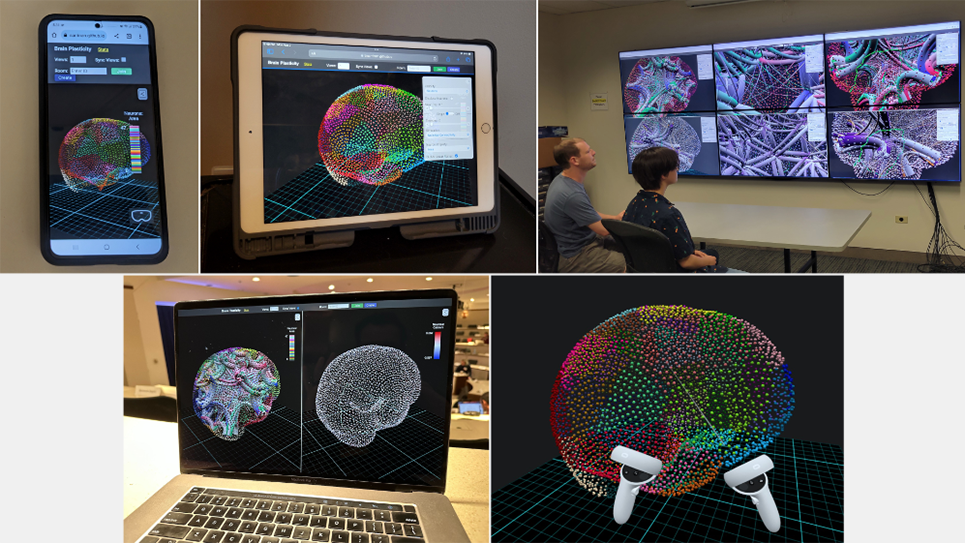“To perform visualization tasks on different display devices, developers typically need to create separate applications that are specifically designed for each device,” Marrinan said. “Our goal was to develop an application and workflow to enable interactive visualizations that can be accessed anywhere from any device with an internet connection. With the ability to spread visualization and interaction across multiple devices simultaneously, our approach is conducive to both in-person and remote collaboration.”
The team’s application workflow offers a combined framework for carrying out data preprocessing, three-dimensional scientific visualization, two-dimensional information visualization, and multi-device collaborative interaction.
To evaluate the application's utility, the team worked with end users to get feedback on the prototype.
“They were able to interpret simulation data without needing an explanation of what was being visualized,” Marrinan said. “Both users found the application to be highly intuitive and expressed interest in incorporating our tool into their workflow. We plan to continue collaborating with them to improve the application’s capabilities for brain research.”
==========
The Argonne Leadership Computing Facility provides supercomputing capabilities to the scientific and engineering community to advance fundamental discovery and understanding in a broad range of disciplines. Supported by the U.S. Department of Energy’s (DOE’s) Office of Science, Advanced Scientific Computing Research (ASCR) program, the ALCF is one of two DOE Leadership Computing Facilities in the nation dedicated to open science.
Argonne National Laboratory seeks solutions to pressing national problems in science and technology. The nation’s first national laboratory, Argonne conducts leading-edge basic and applied scientific research in virtually every scientific discipline. Argonne researchers work closely with researchers from hundreds of companies, universities, and federal, state and municipal agencies to help them solve their specific problems, advance America’s scientific leadership and prepare the nation for a better future. With employees from more than 60 nations, Argonne is managed by UChicago Argonne, LLC for the U.S. Department of Energy’s Office of Science.
The U.S. Department of Energy’s Office of Science is the single largest supporter of basic research in the physical sciences in the United States and is working to address some of the most pressing challenges of our time. For more information, visit https://energy.gov/science.


